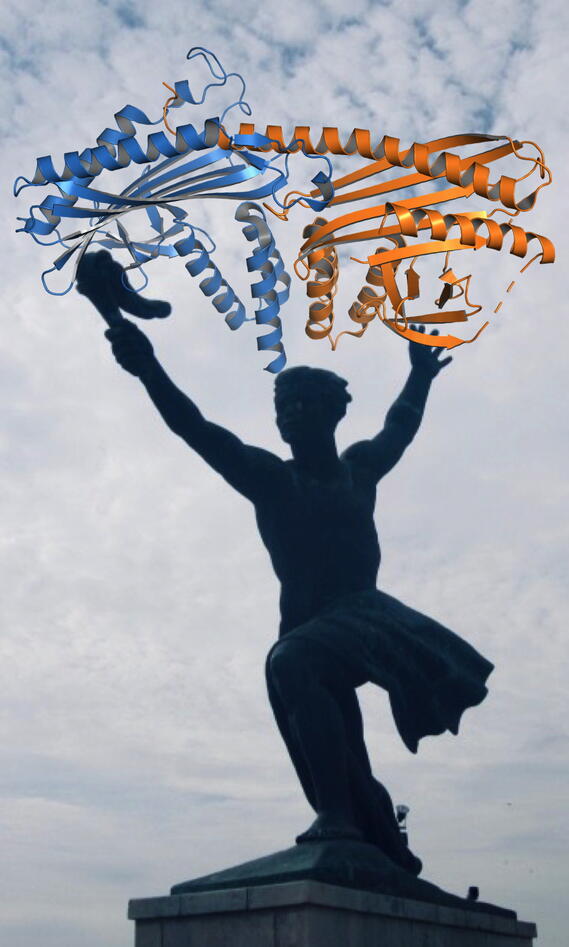Structure of a highly unusual homodimeric actin capping protein of the malaria parasite revealed
Malaria is one of the most devastating infectious diseases in the world. The parasites causing malaria move by gliding, for which force is generated by an unusual actomyosin motor. We have determined a high-resolution crystal structure of one of the key regulators of parasite actin dynamics, the homodimeric actin capping protein alpha.
Main content
Malaria parasites of the genus Plasmodium display a unique form of gliding motility, which depends on an unconventional actomyosin motor. Actin capping proteins (CPs) play a major role in regulating parasite motility. We have characterized structurally and functionally a unique homodimeric Plasmodium berghei CP. All other CPs characterized to date are strictly heterodimeric. The malaria parasite CPs can form both hetero- and homodimers. The homodimeric arrangement enables unconventional biochemical activities, more suited to regulate the fast dynamics of the parasite actin filaments. The crystal structure reveals a rare example of an asymmetric homodimer. The PbCP homodimer displays capping even in the absence of canonical conserved structural elements, suggesting a novel actin-CP interaction mode. These distinct structural properties could provide opportunities for drug design against malaria.
The work was perfomed in collaboration between groups from the University of Bergen, Norway, and the University of Oulu, Finland. The project was funded by the Academy of Finland, the Sigrid Jusélius foundation, the Emil Aaltonen foundation, and the Jane & Aatos Erkko foundation. The work heavily depended on beam time on several European synchrotron sources, and the final diffration data were collected at the Diamond Light Source, Oxfordshire, UK.
Citation:
Bendes ÁÁ, Kursula P & Kursula I (2021) Structure and function of an atypical homodimeric actin capping protein from the malaria parasite. Cell Mol Life Sci in press. Available also in bioRxiv: https://doi.org/10.1101/2020.08.16.253187
